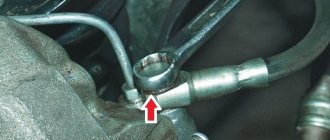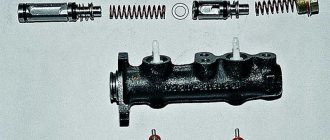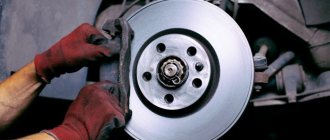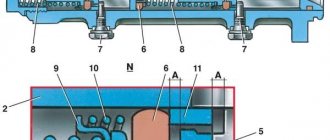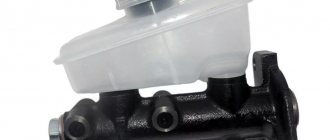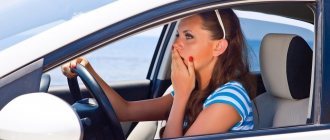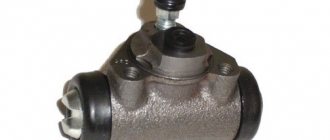If you notice that the car noticeably pulls to the right or left when braking, and after releasing the brake pedal the front wheels (wheel) remain blocked, the brake discs overheat or there is a feeling that they are deformed - then the signs of a faulty brake caliper are obvious, and you should pay close attention to the VAZ disc brake caliper . In particular, its pistons, cylinders and guides deserve special attention.
It is worth considering that similar brake caliper malfunctions can be caused by other reasons. Here is their list:
- Severe wear on the brake pads.
- Brake master cylinder malfunction.
- Presence of air pockets in the hydraulic drive of the brake system.
- Damage to the brake disc.
Therefore, to localize the fault, you must first make sure that all other components are in order and bleed the brake system. Next, you will learn how to check the caliper guides.
Front brake cylinder does not come off
- To the beginning of the forum
- Forum Rules
- Old design
- FAQ
- Search
- Users
Hello!
I have the following problem: The front pads do not move back after braking and, as a result, constantly rub against the disc. This manifests itself as a whistle at high speed. I tried moving them back and forth, the whistling seemed to disappear, but they still rub. Should this be normal? What are the treatment options for this disease? The front pads do not move back after braking and, as a result, constantly rub against the disc.
Dmitry21053
read the instructions.
". The cylinder contains a steel hollow piston I, sealed with a rubber ring 13. It is located in the groove of the cylinder and serves not only to seal the gap, but also to return the piston to its original position when the brake is released. The cylinder cavity is protected from contamination by a rubber cap 15, the outer edge of which is held on the cylinder flange, and the inner edge covers the piston seating belt. "
There should be no beating, no need to mislead people
1. When braking, the pistons under fluid pressure move out of the wheel cylinders and carry along the sealing rings 13, which are twisted. When the brakes are released, when the pressure in the drive drops, the pistons, due to the elastic deformation of the rings 13, are pushed back into the cylinders. In this case, the linings 14 of the brake pads will be in light contact with the brake disc. When the linings wear out,
link to instructions - Word file, with color pictures
“When you press the brake pedal, the pistons begin to come out of the cylinders and press the brake pads against the disc. After the driver releases the pedal, the pads and pistons return to their original position due to a slight “beating”. disk. Disc brakes are very effective and easy to maintain.” https://www.automan.ru/books/book2/22.shtml
Dmitry21053
I’m not arguing, I’m teaching.. I’m getting you out of your delusion.. Why do I need a link to the crooked project of an errant freshman?
If you don’t believe it, pull out the block, have an assistant press the brake lightly, and see how it comes back... on the new cylinder, when you pull it out with pliers, it retracts a little.
“The brake mechanism is designed to reduce the speed of rotation of the wheel due to the friction forces arising between the brake pads and the brake drum or disc. Braking mechanisms are divided into drum and disc. On domestic cars, drum brakes are used on the rear wheels, and disc brakes on the front. Although, depending on the car model, only drum or only disc brakes may be used on all four wheels!
and you learn from this nonsense? Let's get better. and we won't
The brake mechanism is designed to reduce the speed of rotation of the wheel (didn’t it? I thought it was to absorb the energy of the car’s movement), due to the frictional forces that arise between the brake pads and the brake drum or disc. Brake mechanisms are divided (well, this is a phrase from a 10th grader
they are not divided in half, but there are such and such types... interesting is sailing and hydraulic braking, as well as pumping - in shock absorbers, for example, where should we classify them?) into drum and disc ones. On domestic cars, drum brakes are used on the rear wheels, and disc brakes on the front. Although, depending on the model (not the model, but the design solutions used in the model) of the car, only drum or only disc brakes can be used on all four wheels.
“Noise when pressing the brake pedal or vibration occurs due to dirty brake mechanisms, excessive wear of the brake pads, loose or broken rear brake pad tension springs, uneven wear of the brake drums or discs. To eliminate the problem, dirty pads should be washed, and worn and damaged pads, drums, discs and springs should be replaced with new ones.”
But what about the most common cause of beating - souring of one arm of the rear cylinder.
I would be embarrassed to post this on the internet..

